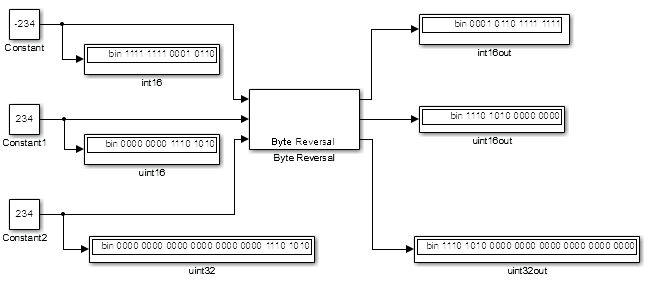Byte Reversal
Reverse little-endian data for big-endian processor
Libraries:
Simulink Support Package for Arduino Hardware /
Utilities
Embedded Coder /
Embedded Targets /
Host Communication
Embedded Coder Support Package for Infineon AURIX TC4x Microcontrollers /
Utilities
Embedded Coder Support Package for STMicroelectronics STM32 Processors /
Utilities
Simulink Coder Support Package for STMicroelectronics Nucleo Boards /
Utilities
SoC Blockset Support Package for Infineon AURIX Microcontrollers /
Utilities
Description
The Byte Reversal block changes the order of the bytes in the input data. Use this block when your process communicates between processors that use different endianness. For example, use this block for communication between Intel® processors that are little-endian and others that are big-endian. Processors compatible with the Intel 80x86 processors and Texas Instruments® processors are little-endian. In this case, insert a Byte Reversal block before the Byte Pack block and another Byte Reversal block just after the Byte Unpack block.
Using the parameter of this block, you specify the number of block inputs.
Ports
Input
Output
Parameters
Version History
Introduced in R2016b
